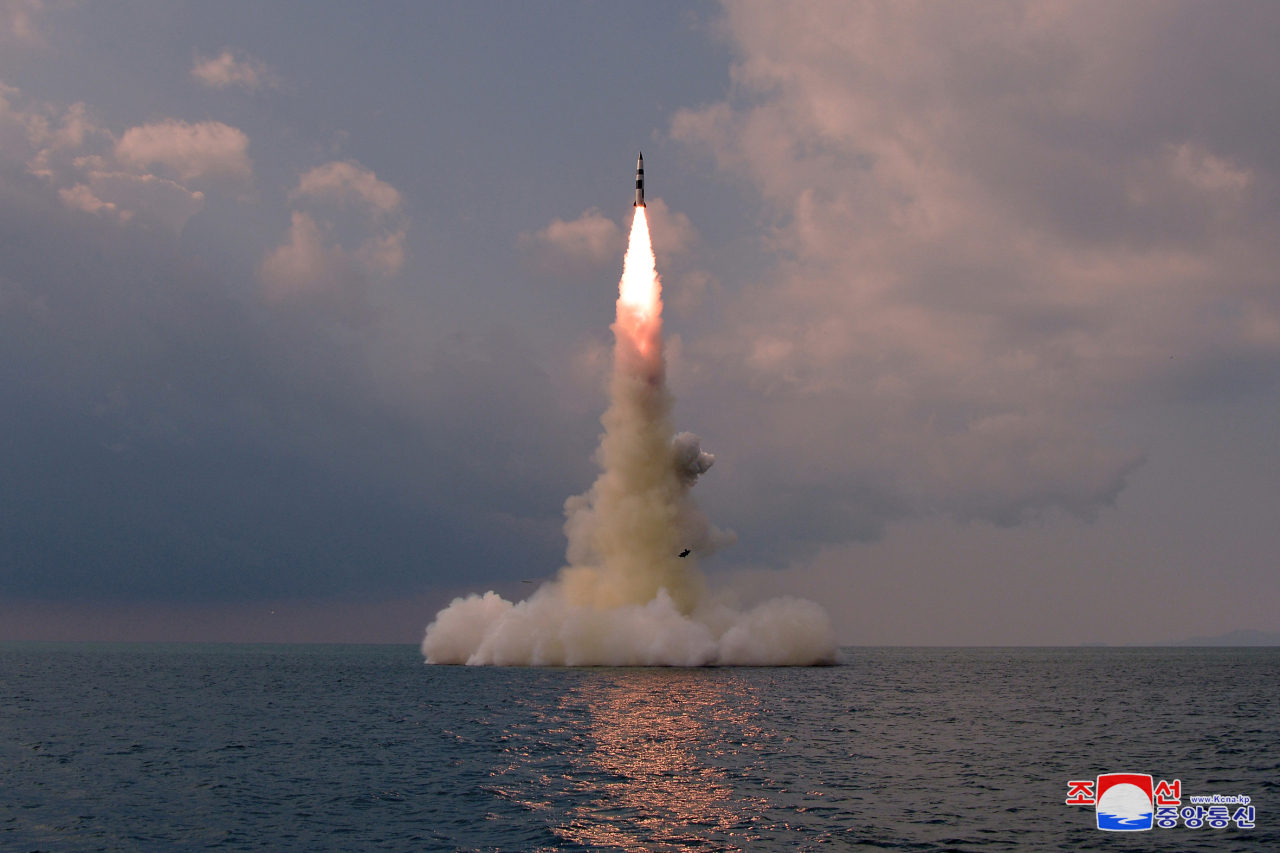Recent N. Korean missile tests aimed at defeating missile defense programs: CRS report
By YonhapPublished : Dec. 14, 2021 - 09:26

WASHINGTON -- North Korea appears to be aiming to counter or cripple US missile defense programs deployed in the Northeast Asian region, the US Congressional Research Service (CRS) said in a report released Monday.
The report follows a series of short and medium-range missile tests conducted by the North this year.
"The recent advances in North Korea's ballistic missile test program appear to be directed at developing capabilities to defeat or degrade the effectiveness of missile defenses deployed in the region: Patriot, Aegis Ballistic Missile Defense (BMD), and Terminal High Altitude Area Defense (THAAD)," said the report.
"In addition, North Korea's progress with submarine-launched ballistic missiles (SLBM) suggests an effort to counter land-based THAAD missile defenses by launching attacks from positions at sea outside the THAAD's radar field of view," it added.
North Korea test launched what it claimed to be a new type of SLBM on Oct. 19 (Seoul time), marking its last and eighth known major missile test this year. The North's missile tests this year included a self-claimed hypersonic glide vehicle.
The report said the North's missile tests may have also been aimed at demonstrating its growing capabilities, which, in turn, may strengthen the credibility of its nuclear deterrence.
"At the January 2021 North Korean Workers' Party Conference, North Korean leader Kim Jong-un hailed the "status of our state as a nuclear weapons state" and praised its "powerful and reliable strategic deterrent"," it said.
The report noted the North has observed a self-imposed moratorium on nuclear and long-range missile testing since 2017, but that such a moratorium may have been forced by a lack of resources.
"North Korea improved its ability to strike the entire continental United States with an ICBM through a series of tests in 2017," said the report.
"Without further testing, neither the North Koreans nor others can assess whether the missiles will function as designed. The absence of ICBM tests since the only successful launch of the Hwasong-15 in November 2017 may also suggest that the North Korean missile force possesses only a small quantity of these weapons or that it is continuing its test moratorium for nontechnical reasons," it added. (Yonhap)
The report follows a series of short and medium-range missile tests conducted by the North this year.
"The recent advances in North Korea's ballistic missile test program appear to be directed at developing capabilities to defeat or degrade the effectiveness of missile defenses deployed in the region: Patriot, Aegis Ballistic Missile Defense (BMD), and Terminal High Altitude Area Defense (THAAD)," said the report.
"In addition, North Korea's progress with submarine-launched ballistic missiles (SLBM) suggests an effort to counter land-based THAAD missile defenses by launching attacks from positions at sea outside the THAAD's radar field of view," it added.
North Korea test launched what it claimed to be a new type of SLBM on Oct. 19 (Seoul time), marking its last and eighth known major missile test this year. The North's missile tests this year included a self-claimed hypersonic glide vehicle.
The report said the North's missile tests may have also been aimed at demonstrating its growing capabilities, which, in turn, may strengthen the credibility of its nuclear deterrence.
"At the January 2021 North Korean Workers' Party Conference, North Korean leader Kim Jong-un hailed the "status of our state as a nuclear weapons state" and praised its "powerful and reliable strategic deterrent"," it said.
The report noted the North has observed a self-imposed moratorium on nuclear and long-range missile testing since 2017, but that such a moratorium may have been forced by a lack of resources.
"North Korea improved its ability to strike the entire continental United States with an ICBM through a series of tests in 2017," said the report.
"Without further testing, neither the North Koreans nor others can assess whether the missiles will function as designed. The absence of ICBM tests since the only successful launch of the Hwasong-15 in November 2017 may also suggest that the North Korean missile force possesses only a small quantity of these weapons or that it is continuing its test moratorium for nontechnical reasons," it added. (Yonhap)








![[KH Explains] Hyundai's full hybrid edge to pay off amid slow transition to pure EVs](http://res.heraldm.com/phpwas/restmb_idxmake.php?idx=644&simg=/content/image/2024/04/18/20240418050645_0.jpg&u=20240419100350)







![[From the Scene] Monks, Buddhists hail return of remains of Buddhas](http://res.heraldm.com/phpwas/restmb_idxmake.php?idx=652&simg=/content/image/2024/04/19/20240419050617_0.jpg&u=20240419175937)

![[KH Explains] Hyundai's full hybrid edge to pay off amid slow transition to pure EVs](http://res.heraldm.com/phpwas/restmb_idxmake.php?idx=652&simg=/content/image/2024/04/18/20240418050645_0.jpg&u=20240419100350)

![[Today’s K-pop] Illit drops debut single remix](http://res.heraldm.com/phpwas/restmb_idxmake.php?idx=642&simg=/content/image/2024/04/19/20240419050612_0.jpg&u=)